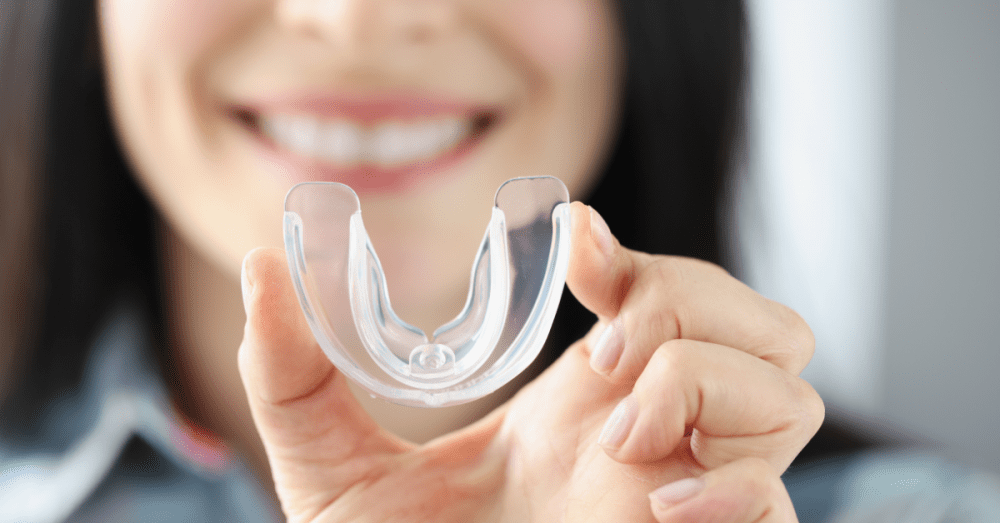Based on the dentist’s commands, Illusion teeth Aligners create a series of virtual models of the teeth, These models are published on a 3D printer and used to produce clear plastic servers called aligners.
Vaishnavi, a 26 year old mechanical engineer, was afraid to smile. Her mal-aligned teeth took her confidence away. At a young age, she was advised orthodontic treatment, also known as braces. She had witnessed her friends complaining about the looks, irritation, pain, and ulcers associated with their metal braces. One fine day while scrolling through the posts on Instagram she stumbled upon Illusion Aligners, the best invisible aligners of the century. Illusion aligners carry out rapid tooth movement to convene the aesthetic needs of patients confidently. Illusion aligners are the best invisible braces that boast a combination of flexibility, strength, and clarity designed for lasting wear with the highest comfort.
Invisible Teeth Aligners Know Everything
Illusion teeth aligners work like any other orthodontic appliance they apply pressure that steadily moves the teeth and reshapes the supporting bone. The procedure is fairly easy: first, the dentist records the intraoral scan of the patient’s teeth. The dentist decides how the teeth should be straightened, and submits the case to Illusion Aligners. A happy smile can change the world, and Illusion Aligners helps you achieve cheerful smiles because they are designed by orthodontists, and trusted by dentists.
The user snaps the aligners onto their teeth and wears them all through the day and all night, taking them out only to eat, drink, and brush their teeth. The aligners are clear, so most people don’t notice them. However, dentists generally define Illusion aligners as going to be your stylish bet if you ask for the most invisible thing for your orthodontic treatment.
Each aligner applies light pressure to certain teeth, pushing them closer to the asked position.
Let’s read a little bit about how this works. A periodontal ligament girdles each tooth. This ligament is girdled by fluid and bitsy filaments that connect the teeth to the girding bone. Once the aligner is put on, it incontinently starts applying pressure to the targeted teeth. The periodontal ligament and its fluid hold the tooth from moving at first, but after a few seconds, the area is devoid of fluid, and the tooth displaces to its new desired position.
The ligament is only about a quarter of a millimeter thick, so the teeth can only move a bitsy distance at a time.
The illusion aligner compresses the blood vessels on the front side of the ligament and dilates them on the other. After 4- 6 hours of sustained pressure, the compressed ligament responds to this stress by producing enzymes and chemical couriers.
After a few days of use, chemicals begin to stimulate the production of bone cells called osteoclasts and osteoblasts. The bone near the compressed ligament is broken down by osteoclasts.
Meanwhile, osteoblasts make a new bone on the opposite side of the tooth, preventing it from getting too loose. However, the process has to start over from scratch, if the pressure of the aligners is intruded for any significant length of time.
That’s why it’s critical to wear the aligners at least 22 hours per day, especially for the first many days. The teeth won’t stay straight If the bone doesn’t get reshaped.
Illusion Aligners believe in setting teeth right, the right way, and with the right approach.
When the bone around the tooth finishes rebuilding, it’s time to take out the old aligners and advance to the coming set of unnoticeable braces. This rate of reconditioning can vary vastly between individualities it generally takes longer for grown-ups than it does for children and adolescents. Each aligner moves the teeth a little bit further until the case gets to the last step and the treatment is complete.
Illusion Aligners are practically invisible braces for those who don’t love the metal mouth look. Many celebrities and public figures have used Illusion Aligners to straighten their teeth while living in the spotlight and strolling on the red carpet. Some celebrities treated with invisible braces include Kareena Kapoor, Justin Bieber, Zac Efron, Oprah Winfrey, Keira Knightley, Khloe Kardashian, Serena Williams, and even Duchess Kate Middleton.
Movie stars, professionals, athletes, singers, and even royalty have used Illusion Aligners to straighten their teeth without drawing unwanted attention.
The next major benefit of invisible braces is that there are no food restrictions. Those with metal braces have to avoid some foods like popcorn, pieces of bread with hard crusts such as bagels, biting into apples or corn on the cob, and most kinds of candy or gum and any other hard crunchy, or sticky food.
Meanwhile with illusion aligners, being the best aligners for foodies, none of your favorite foods are restricted. You remove your aligners and eat whatever you wish for.
It is very easy to brush and floss your teeth with Invisible Illusion Aligners.
With illusion Aligners, there are no brackets and wires to trap food, and patients with invisible braces usually have fewer problems with poor oral hygiene.


